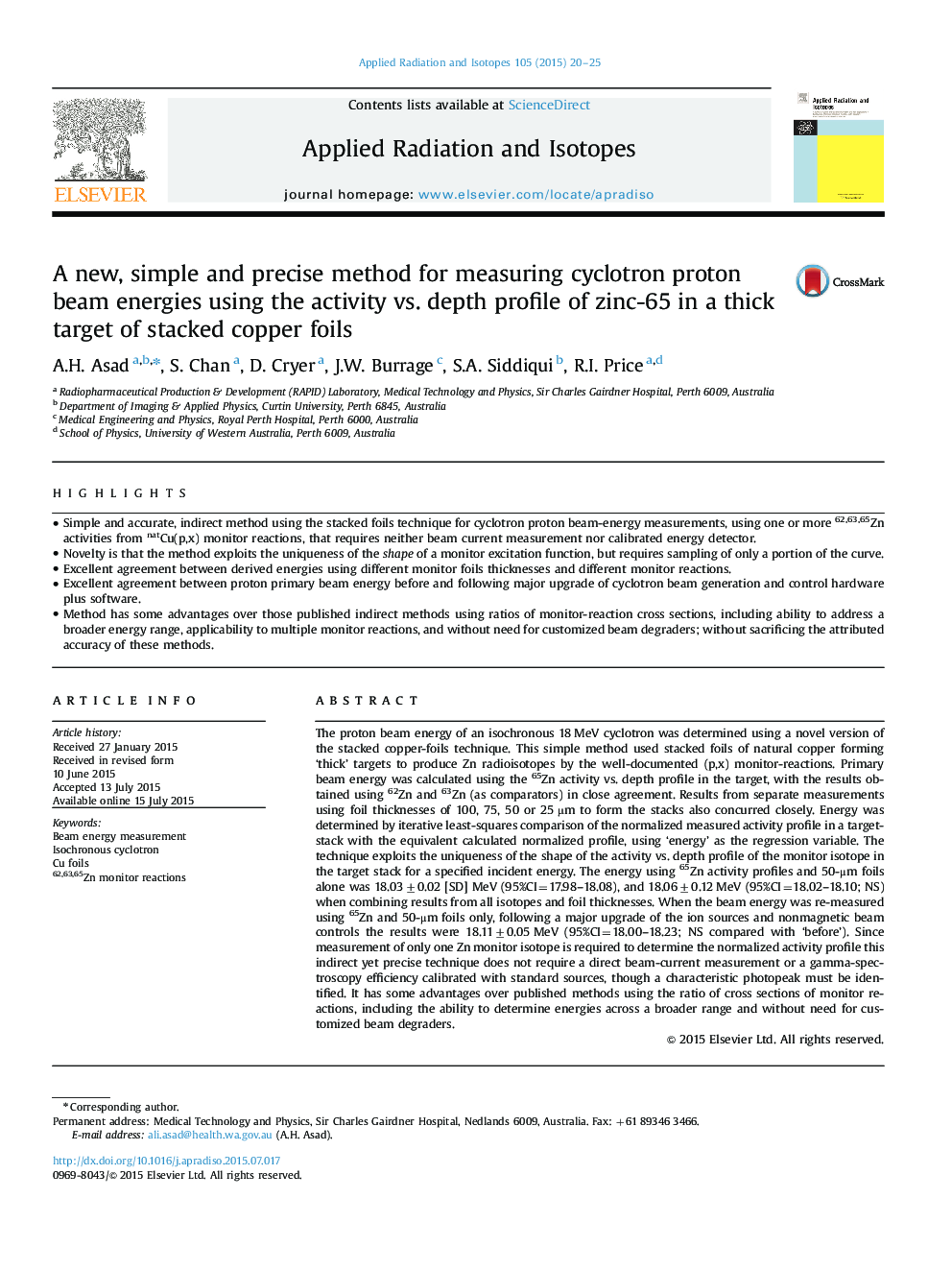| کد مقاله | کد نشریه | سال انتشار | مقاله انگلیسی | نسخه تمام متن |
|---|---|---|---|---|
| 1875814 | 1532092 | 2015 | 6 صفحه PDF | دانلود رایگان |
• Simple and accurate, indirect method using the stacked foils technique for cyclotron proton beam-energy measurements, using one or more 62,63,65Zn activities from natCu(p,x) monitor reactions, that requires neither beam current measurement nor calibrated energy detector.
• Novelty is that the method exploits the uniqueness of the shape of a monitor excitation function, but requires sampling of only a portion of the curve.
• Excellent agreement between derived energies using different monitor foils thicknesses and different monitor reactions.
• Excellent agreement between proton primary beam energy before and following major upgrade of cyclotron beam generation and control hardware plus software.
• Method has some advantages over those published indirect methods using ratios of monitor-reaction cross sections, including ability to address a broader energy range, applicability to multiple monitor reactions, and without need for customized beam degraders; without sacrificing the attributed accuracy of these methods.
The proton beam energy of an isochronous 18 MeV cyclotron was determined using a novel version of the stacked copper-foils technique. This simple method used stacked foils of natural copper forming ‘thick’ targets to produce Zn radioisotopes by the well-documented (p,x) monitor-reactions. Primary beam energy was calculated using the 65Zn activity vs. depth profile in the target, with the results obtained using 62Zn and 63Zn (as comparators) in close agreement. Results from separate measurements using foil thicknesses of 100, 75, 50 or 25 µm to form the stacks also concurred closely. Energy was determined by iterative least-squares comparison of the normalized measured activity profile in a target-stack with the equivalent calculated normalized profile, using ‘energy’ as the regression variable. The technique exploits the uniqueness of the shape of the activity vs. depth profile of the monitor isotope in the target stack for a specified incident energy. The energy using 65Zn activity profiles and 50-μm foils alone was 18.03±0.02 [SD] MeV (95%CI=17.98–18.08), and 18.06±0.12 MeV (95%CI=18.02–18.10; NS) when combining results from all isotopes and foil thicknesses. When the beam energy was re-measured using 65Zn and 50-μm foils only, following a major upgrade of the ion sources and nonmagnetic beam controls the results were 18.11±0.05 MeV (95%CI=18.00–18.23; NS compared with ‘before’). Since measurement of only one Zn monitor isotope is required to determine the normalized activity profile this indirect yet precise technique does not require a direct beam-current measurement or a gamma-spectroscopy efficiency calibrated with standard sources, though a characteristic photopeak must be identified. It has some advantages over published methods using the ratio of cross sections of monitor reactions, including the ability to determine energies across a broader range and without need for customized beam degraders.
Journal: Applied Radiation and Isotopes - Volume 105, November 2015, Pages 20–25
